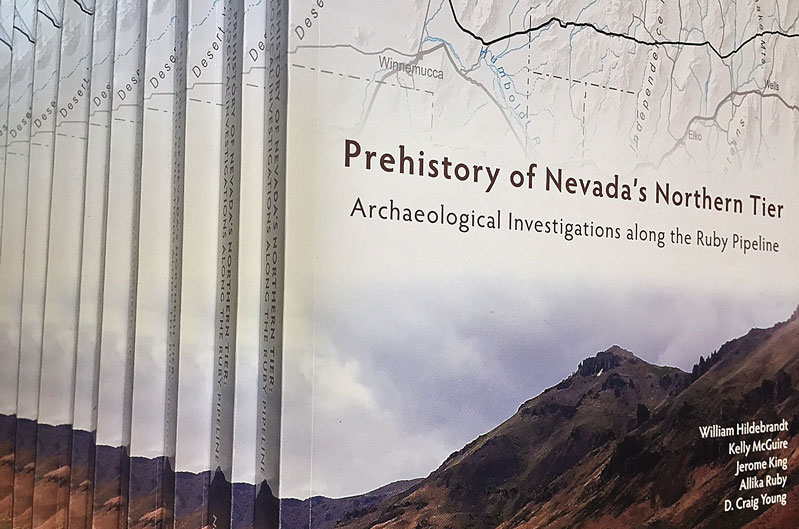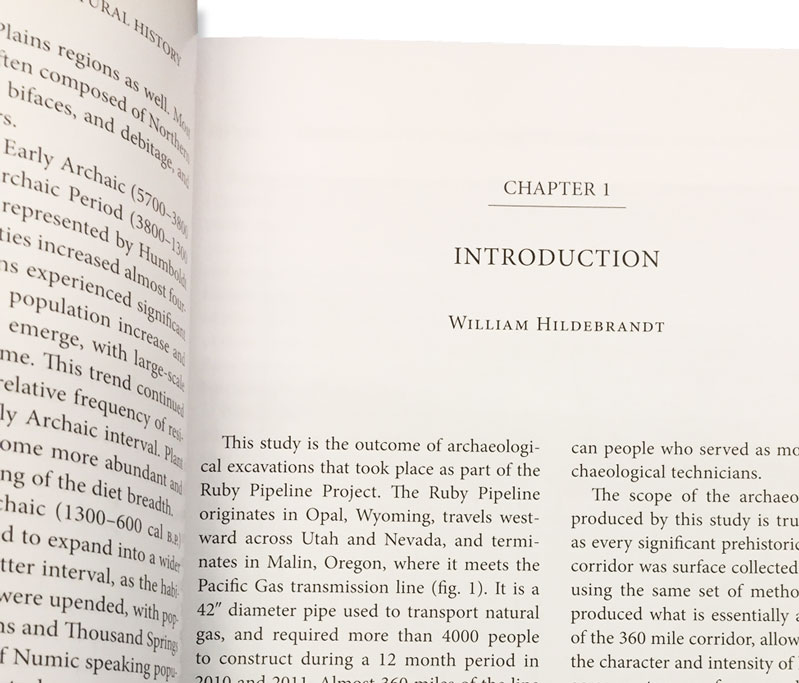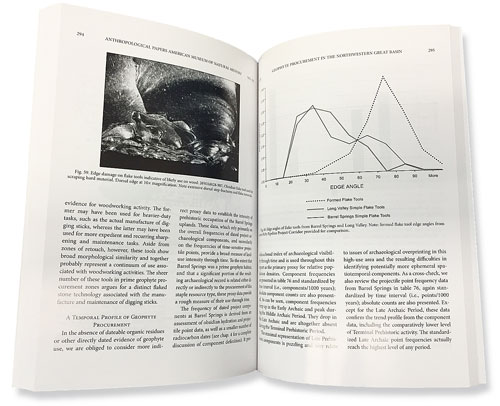Far Western was awarded one of the coveted 2016 Governor’s Historic Preservation Awards for the Cuyama Valley – A Corridor to the Past project. The California Office of Historic Preservation chose the project as an exceptional example of historic preservation efforts on behalf of California’s cultural heritage. The project, directed by Far Western Project Manager and Principal Investigator Patricia Mikkelsen, was a collaborative effort among the Native Chumash community, the District 5 Central Coast Specialist Branch of the California Department of Transportation, the Santa Barbara Museum of Natural History, Foothill Resources, and Tiley Research.
Project Background

Cuyama Valley – A Corridor to the Past showcases seven archaeological sites that underwent initial salvage excavations in the late 1960s and early 1970s, with final analysis nearly 40 years later.
The California Division of Highways (precursor to the California Department of Transportation [Caltrans]) carried out three highway realignment projects along State Route 166 in Cuyama Valley. As the project pre-dated the birth of modern Cultural Resources Management practices (i.e., funding was not set aside for analysis of cultural materials unearthed during infrastructure projects), the assemblage was never formally documented. As a result, the collection sat untouched in the UC Santa Barbara archives. Dr. Valerie Levulett, Chief of the Caltrans Central Coast Environmental Specialist Branch and one of the original archaeologists who participated in the salvage excavation work, submitted a Caltrans Transportation Enhancement grant proposal to address the long-delayed processing of these important collections. With the grant approved, Far Western, under a Caltrans cultural resources on-call contract, was tasked with the challenge of not only analyzing the collection, but recreating the excavation itself through numerous field and photograph logs, field notes, and maps. Far Western also reached out to others who were part of the original project, including Dr. Jeanne Binning, Al McCurdy, and Max Farrar, to help set the scene.
Prior to this endeavor, little was known about Cuyama Valley prehistory. Minimal formal archaeological work and few publications have focused on the valley—a corridor that once connected the prehistoric population centers of the Central Valley and Central Coast. The data compilation brought to light a wealth of information about the history and lifeways of the Native people of the region.
Far Western catalogued approximately 3,000 flaked and ground stone tools, including over 400 projectile points, and nearly 5,000 shell, stone, and glass beads and ornaments. These types of discoveries allow for an array of research opportunities and contributions to the archaeology, ethnography, and history of the region.
Archaeological Contributions
- A graphic representation of local temporal indicators across time, as well as temporal charts of local projectile point and bead types
- Identification of, and focus on, site-specific temporal components
- Extensive original research and discussions on landscape evolution and geoarchaeological sensitivity, including a map of buried site potential in the Caltrans right-of-way in the Cuyama Valley
- A detailed description and discussion of a fully exposed Chumash structure
- Analysis of yucca-roasting ovens, including feature descriptions, plant identifications, and preparation methods and resulting archaeological evidence
- A contribution to the ongoing debate on artiodactyl abundance
- Patterns of technology, settlement, and social interactions.
Ethnographic Contributions
- Estimates of non-mission populations in Cuyama Valley, and the effects of European-borne diseases, especially on children
- Discussions and complex diagrams of social interactions between Cuyama Valley inhabitants and surrounding villages
- Detailed kinship charts of Native individuals associated with Cuyama Valley villages
- First-hand accounts from court dockets of Cuyama Valley Native Americans in the 1840s and 1850s
- A focus on the concerns and activities of today’s Chumash who are carrying on the traditions and languages of their ancestors
Contributions to the History of the Region
- A documented history of Cuyama Valley’s early settlement and land use, with special reference to the occupation of sites during the Spanish and Mexican periods in California
- Evolution of transportation corridors through the valley
- Development of adjacent road- and highway-related features that have encroached upon the seven Cuyama Valley sites.

Public Outreach Efforts
The project produced four genres of public-oriented interpretive material designed in collaboration with individuals from the Northern, Barbareño, and Ventureño Chumash tribes for use in educating the public about the unique prehistory of Cuyama Valley—a booklet, exhibits, bookmarks, and tool replicas.
Far Western prepared a full-color, 70-page booklet, entitled The Long Road Traveled – Archaeology, Native Americans, and Europeans in Cuyama Valley, which discusses the Cuyama Valley project, the region’s prehistory and history, Chumash culture, and living descendants. It concludes with a short glossary of archaeological terms and suggestions for further reading. Caltrans printed 1,000 booklets and distributed them free to Native Americans, Cuyama Valley residents, the Santa Barbara Museum of Natural History, and local libraries, museums, and schools.
The project could not have been accomplished without the following individuals:
Far Western
Pat Mikkelsen
Jack Meyer
Adrian Whitaker
Eric Wohlgemuth
Nathan Stevens
Deborah Jones
Molly Fogarty Starr
Tammara Norton
Elizabeth Honeysett
Laura Harold
Jill Eubanks
Foothill Resources
Julia Costello
Caltrans
Valerie Levulett
Jeannine Binning
Krista Kiaha
Paula Carr
Ed Schefter
Terry Joslin
Rochelle Vierra
Tiley Research
Michelle Tiley
Santa Barbara Museum of Natural History
John Johnson
Other Individuals
Robert Gibson
Kenneth Gobalet
Gregory White
Emma Britton
Ronald Bishop
Richard Hughes
Chester King
Jeff Parsons
Thomas Origer




















